Ampere Roadmap Update: Switching to In-House CPU Designs, 128+ 5nm Cores in 2022
by Andrei Frumusanu on May 19, 2021 11:00 AM EST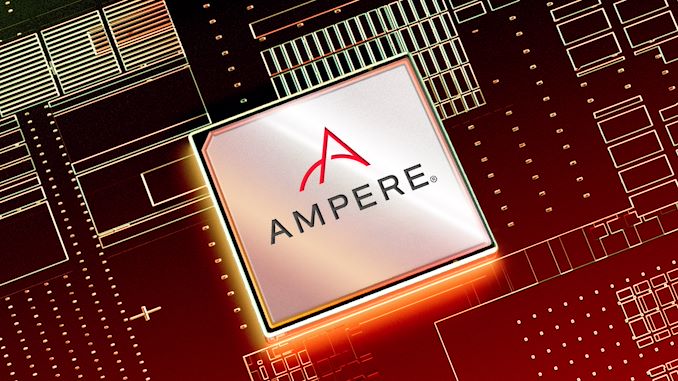
Today we’re covering some news of the more unusual type, and that is a roadmap update from Ampere, and having a closer look what the company is planning in terms of architectural and microarchitectural choices of their upcoming next-generation server CPUs in 2022 and onwards.
For people not familiar with Ampere, the company was founded back in 2017 by former Intel president Renée James, notably built upon a group of former Intel engineers who had left along with her to the new adventure. Initially, the company had relied on IP and design talent from former AppliedMicro’s X-Gene CPUs and still supporting legacy products such as the eMAG line-up.
With Arm having starting a more emphasised focus on designing and releasing datacentre and enterprise CPU IP line-ups in the form of the new Neoverse core offerings a few years back, over the last year or so we had finally seen the fruits of these efforts in the form of the release of several implementations of the first generation Neoverse N1 server CPU cores products, such as Amazon’s Graviton2, and more importantly, Ampere’s “Altra Quicksilver” 80-core server CPU.
The Altra Q line-up, for which we reviewed the flagship Q80-33 SKU last winter, was inarguably one of the most impressive Arm server CPU executions in past years, with the chip being able to keep up or beat the best AMD and Intel had to offer, even extending that positioning against the latest generation Xeon and EPYC generation.
Ampere’s next generation "Mystique" Altra Max is the next product on the roadmap, and is targeted to be sampling in the next few months and released later this year. The design relies on the same first generation Arm Neoverse N1 cores, at the same maximum 250W TDP as a drop-in replacement on the same platform, however with an optimised implementation that now allows for up to 128 CPU cores – 60% more cores than the first iteration of Altra we have today, and double the amount of cores of competitor systems from AMD or Amazon’s Graviton2.
For the future for designs beyond the Altra Max, Ampere is promising that they will be continuing emphasis of what they consider “predictable performance” for workloads with scaling socket load, increasing core counts with a linear increase in performance, and what I found interesting as a metric, to continue to reduce power per core – something to keep in mind as we’re discussing the next big news today:
Replacing Neoverse with Full Custom Cores
Today’s big reveal comes in regard to the microarchitecture choices that Ampere is going to be using starting in their next generation 2022 “Siryn” design, successor to the Altra Max, and relates to the CPU IP being used:
Starting with Siryn, Ampere will be switching over from Arm’s Neoverse cores to their new in-house full custom CPU microarchitecture. This announcement admittedly caught us completely off-guard, as we had largely expected Ampere to continue to be using Arm’s Neoverse cores for the foreseeable future. The switch to a new full custom microarchitecture puts Ampere on a completely different trajectory than we had initially expected from the company.
In fact, Ampere explains that what the move towards a full custom microarchitecture core design was actually always the plan for the company since its inception, and their custom CPU design had been in the works for the past 3+ years.
In terms of background - the design team leading the effort is lead by Ampere’s CTO Atiq Bajwa, who is also acting as the chief architect on the project. Bajwa and the team surrounding him appear to be mostly comprised of high-profile ex-Intel engineers and veterans which had left the company along with Renée James in 2017, topped-off with talent from a slew of other companies in the industry who joined them in the effort. The pedigree and history of the team is marked by achievements such as working on Intel’s Haswell and Broadwell processors.
Ampere’s explanation and rationale for designing a full custom core from the ground up, is that they are claiming they are able to achieve better performance and better power efficiency in datacentre workloads compared to what Arm’s Neoverse “more general purpose” designs are able to achieve. This is quite an interesting claim to make, and contrasts Arm’s projections and goals for their Neoverse cores. The recent Neoverse V1 and N2 cores were unveiled in more detail last month and are claimed to achieve significant generational IPC gains.
For Ampere to relinquish the reliance on Arm’s next-gen cores, and instead to rely on their own design and actually go forward with that switch in the next-gen product, shows a sign of great confidence in their custom microarchitecture design – and at the same time one could interpret it as a sign of no confidence in Arm’s Neoverse IP and roadmap. This comes at a great juxtaposition to what others are doing in the industry: Marvell has stopped development of their own ThunderX CPU IP in favour of adopting Arm Neoverse cores. On the other hand, not specifically related to the cloud and server market, Qualcomm earlier this year have acquired Nuvia, and their rationale and explanation was similar to Ampere’s in that they’re claiming that the new in-house design capabilities offered performance that otherwise wouldn’t have been possible with Arm’s Cortex CPU IP.
In our talks with Jeff Wittich, Ampere’s Chief Product Officer, he explains that today’s announcement should hopefully help paint a better picture of where Ampere is heading as a company – whether they’d continue to be content on “just” being an Arm IP integrator, or if they had plans for more. Jeff was pretty clear that in a few years’ time they’re envisioning and aiming for Ampere to be a top CPU provider for the cloud market and major player in the industry.
In terms of technical details as to how Ampere’s CPU microarchitecture will be different in terms of approach and how and why they see it as a superior performer in the cloud, are questions to which we’ll have to be a bit more patient for hearing answers to. The company wouldn’t comment on the exact status of the Siryn design right now – on whether it’s been taped in or taped out yet, but they do retierate that they’re planning customer sampling in early 2022 in accordance to prior roadmap disclosures. By the tone of the discussions, it seems the design is mostly complete, and Ampere is doing the finishing touches on the whole SoC. Jeff mentioned that in due time, they also will be doing microarchitectural disclosures on the new core, explaining their design choices in things like front-end or back-end design, and why they see it as a better fit for the cloud market.
Altra Max later this year, more cloud customer disclosures
Beyond the longer-term >2022 plans, today’s roadmap updates also contained a few more performance claim reiterations of Ampere’s upcoming 128-core Altra Max product, which is planned to hit the market later in the second half of the year and customers being sampled in the next few months.
The “Mystique” code-named Altra Max design will be characterised in that it’s able to increase the core-count by 60% versus the current generation Altra design, all while remaining at and below the same 250W TDP. The performance slides here are showcasing comparisons and performance claims against what is by now the previous generation competitor products, Ampere here simply explains they haven’t been able to get their hands on more recent Milan or Ice Lake-SP hardware to test. Nevertheless, the relative positioning against the Altra Q80-30 and the EPYC 7742 would indicate that the new chip would easily surpass the performance of even AMD’s latest EPYC 7763.
In the slide, Ampere actually discloses the SKU model name being used for the comparison, which is the "Altra Max M128-30" – meaning for the first time we have confirmation that all 128 cores are running at up to 3GHz clock speed, which is impressive given that we’re supposed to be seeing the same TDP and power characteristics between it and the Q80-33. We’ll be verifying these figures in the next few months once we get to review the Altra Max.
Today’s announcement also comes with an update on Ampere’s customers. Oracle was notably one of the first Altra adopters, but today’s disclosure also includes a wider range of cloud providers, with big names such as ByteDance and Tencent Cloud, two of the biggest hyperscalers in China.
Microsoft in particular is a big addition to the customer list, and while Ampere’s Jeff Wittich couldn’t comment on whether Microsoft has other internal plans in the works, he said that today’s announcement should give more clarity around the rumours of the Redmond company working on Arm-based servers, reports of which had surfaced back in December. Microsoft’s Azure cloud service is only second to Amazon’s AWS in terms of size and scale, and the company onboarding Altra products is a massive win for Ampere.
Taking control of one’s own future
Today’s announcements by Ampere of them deploying their own microarchitecture in future products is a major change in the company’s prospects. The news admittedly took us by surprise, but in the grand scheme of things it makes a lot of sense given that the company aims to be a major industry player in the next few years – taking full control of one’s own product future is critical in terms of assuring that success.
While over the years we’ve seen many CPU design teams be disbanded, actually having a new player and microarchitecture pop up is a much welcome change to the industry. While the news is a blow to Arm’s Neoverse IP, the fact that Ampere continues to use the Arm architecture is a further encouragement and win for the Arm ecosystem.
Related Reading:
- The Ampere Altra Review: 2x 80 Cores Arm Server Performance Monster
- Oracle Announces Upcoming Cloud Compute Instances: Ice Lake and Milan, A100 and Altra
- Next Generation Arm Server: Ampere’s Altra 80-core N1 SoC for Hyperscalers against Rome and Xeon
- Arm Announces Neoverse V1, N2 Platforms & CPUs, CMN-700 Mesh: More Performance, More Cores, More Flexibility
- Intel 3rd Gen Xeon Scalable (Ice Lake SP) Review: Generationally Big, Competitively Small
- AMD 3rd Gen EPYC Milan Review: A Peak vs Per Core Performance Balance


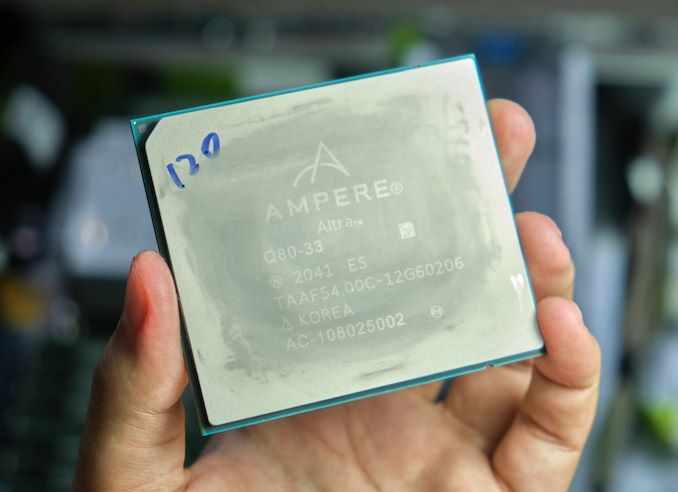
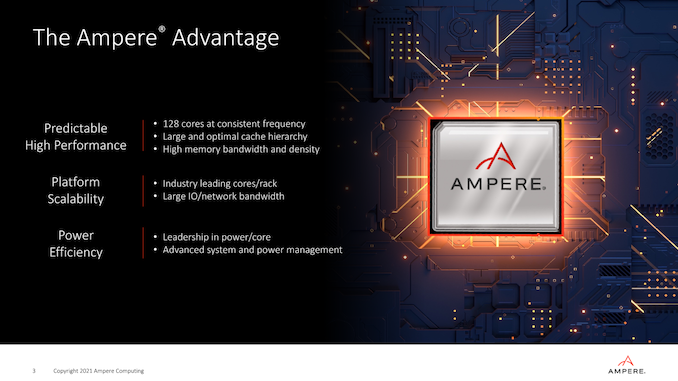
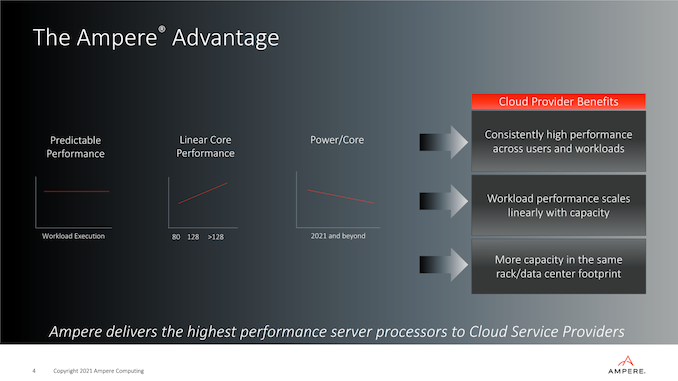
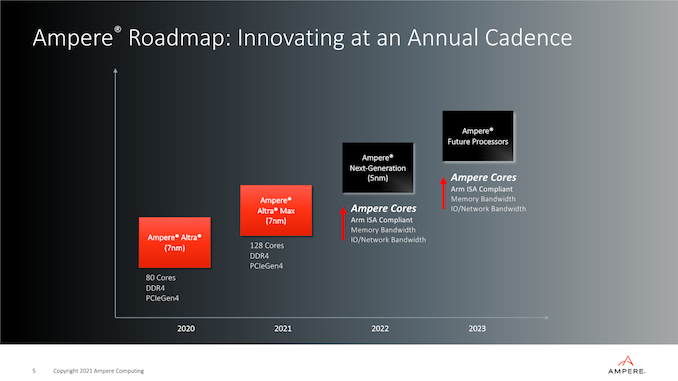
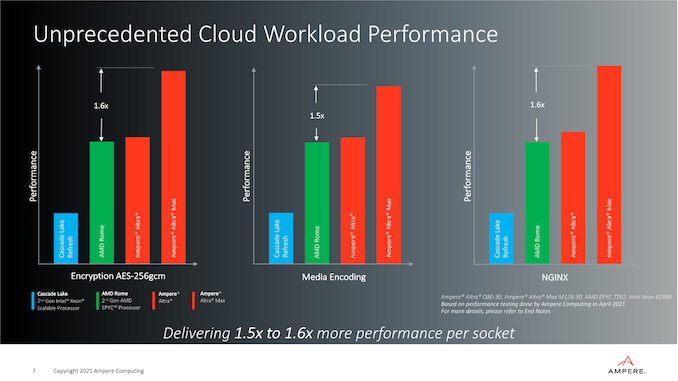
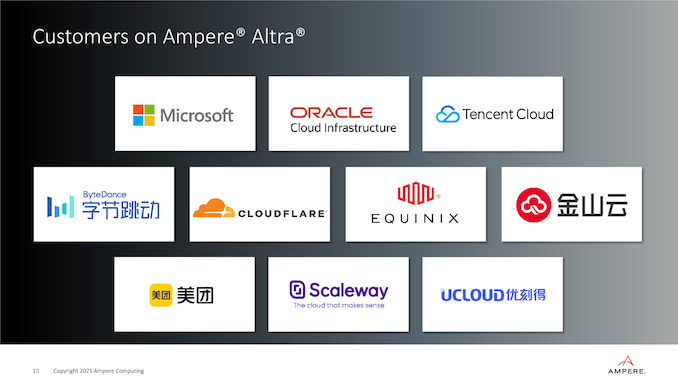








160 Comments
View All Comments
eastcoast_pete - Wednesday, May 19, 2021 - link
I think Ampere sees the writing on the wall. The problem with using standard ARM designs going forward is that it'll be a race to the (pricing) bottom, basically who can deliver the most cores for the buck. Ampere and the other independent ARM server CPU design houses cannot really differentiate on manufacturing; there are only two choices, one of them not as good - Samsung, so all want TSMC.That leaves a better architecture, custom made, to differentiate from the rest of the growing pack. I think Ampere tries to pull off what Apple was so successful at doing for mobile and now laptop/desktop use: create a better uarch than the one ARM has to offer. But, it's a risky move indeed.And, entirely without sources, here a thought: Maybe they found a sugar daddy to finance that move, I am thinking about a certain company headquartered in Redmond, WA. Would fit with their most recent announcements of customer wins.
name99 - Wednesday, May 19, 2021 - link
The obvious choice is QC acquires Ampere.The world is just not big enough to support this many ongoing CPU designs. You need a huge market to amortize your costs, and you have to keep doing it EVERY YEAR. You need three or four teams running in parallel each at different stages of the next designs. No way Ampere can maintain that; they can create their one core which may even be good -- but which won't be updated *substantially* till four years later... Meanwhile Apple is delivering annual 20..30% increases, and even ARM Ltd hopes to provide 15% or so annually.
Nuvia probably saw that reality from the start, were mainly treading water for a year trying to execute on the "be acquired before we even ship a product" part of the plan.
Apple, ARM (for hyperscalers and random use cases that just want a core, any core) and QC (for mobile, desktop, "servers", and various non-hyperscaler warehouses) is probably all that's economically feasible.
EthiaW - Wednesday, May 19, 2021 - link
Perhaps acquiring Ampere would be a nice choice for Nvidia, they will then have a complete portfolio for server processors. The ARM deal doesn't seem to be making progress anyway.grant3 - Thursday, May 20, 2021 - link
Apparently nvidia wants to be the guy who collects the rent, not the one who pays the rent.I do not see how buying ampere fulfills whatever their strategic ambitions are with a purchase of ARM
EthiaW - Thursday, May 20, 2021 - link
ARM has a large bulk of revenue (as well as a large bulk of market cap) coming from little loT processors l, while Nvidia has ambition only for big fat chips no smaller than phone SoCs. Frankly speaking Nbidia only needs high performance CPU to finish its server portfolio. Acquiring ARM is an overkill, finally technically and politically.mode_13h - Friday, May 21, 2021 - link
> Frankly speaking Nbidia only needs high performance CPU to finish its server portfolio.No, they're making a huge push into self-driving cars and robots. They have a whole line of SoCs for that, which have been ARM-based since the time they tried to sell them into the phone and tablet market.
mode_13h - Friday, May 21, 2021 - link
And their latest embedded ARM cores are reportedly not very competitive even with ARM's own Cortex offerings.ksec - Wednesday, May 19, 2021 - link
The N2 is suppose to be 40%+, that is a huge jump in terms of IPC. I would expect Ampere's custom core to at least out perform N2, otherwise why make a custom core?But then the N2 is actually pretty decent core at only ~2W.
mode_13h - Friday, May 21, 2021 - link
> expect Ampere's custom core to at least out perform N2, otherwise why make a custom core?Better perf/W? Better performance on specialized workloads?
EthiaW - Wednesday, May 19, 2021 - link
Until now EVERY single attempt for customized ARM microarchitectures has failed miserably except Apple.Good luck ampere.